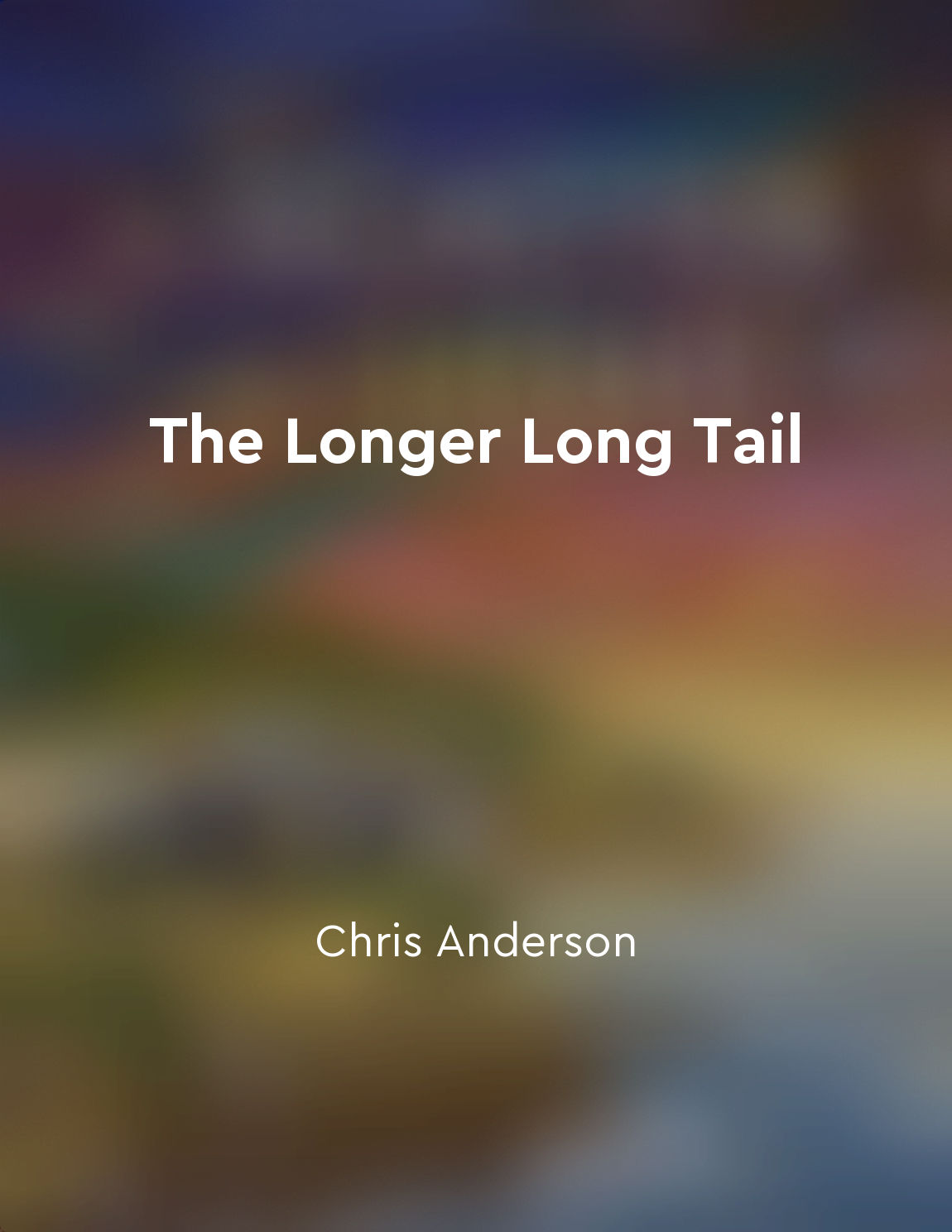Shift in consumer behavior from "summary" of The Longer Long Tail by Chris Anderson
The shift in consumer behavior is a fundamental change in the way people shop, consume, and interact with products and services. This shift is driven by technology, globalization, and changing social and cultural norms. Consumers today have more choices than ever before, thanks to the proliferation of online shopping platforms, social media, and mobile devices. They can access a vast array of products and services from anywhere in the world, at any time of day or night.
One of the key drivers of this shift is the Long Tail phenomenon, which refers to the idea that the internet has made it possible for niche products and services to find an audience. In the past, retailers focused on selling a limited number of popular products to a mass audience. However, the Long Tail theory suggests that there is a significant market for less popular, niche products that appeal to a smaller, but still profitable, audience.
As a result, consumers are no longer limited to choosing from a narrow selection of mainstream products. Instead, they can explore a vast array of niche offerings that cater to their specific interests and preferences. This has led to a democratization of consumption, where consumers have more power and choice than ever before.
In addition to the Long Tail phenomenon, the shift in consumer behavior is also driven by changing attitudes towards ownership and access. In the past, owning a product was seen as a sign of success and status. However, today's consumers are more focused on access and experiences than ownership. This has given rise to the sharing economy, where people rent or share products and services rather than buying them outright.The shift in consumer behavior is a complex and multifaceted phenomenon that is reshaping the way people shop, consume, and interact with products and services. It is driven by technology, globalization, and changing social and cultural norms, and is characterized by a focus on choice, access, and experiences rather than ownership. This shift has significant implications for businesses, marketers, and consumers alike, and will continue to shape the future of commerce in the years to come.

Open in app
The road to your goals is in your pocket! Download the Oter App to continue reading your Microbooks from anywhere, anytime.


